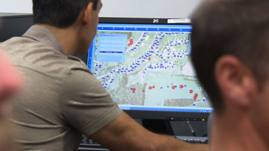Teachers' Domain - Digital Media for the Classroom and Professional Development
User: Preview




One of the chief reasons why people go to school and stay in school is for the purpose of building a career. The foundation of your career is laid in school, by learning the basics of many a skill, science and art. Not only are people who complete their college degree more marketable, people who have a college degree are likely to earn more over the course of their careers than high school graduates. In fact, one of the reasons behind the existence of public education is to create productive citizens and supply the various tiers of the workforce with new employees and fresh talent.
The nature of careers changes over the course of a historical period, both for social and technological reasons. The developed world is living in an age of the most rapid technological change in recent human history- possibly ever. As a direct consequence of this, jobs and careers are undergoing a sea change. Education as a discipline is focused on providing 21st century skills to students today, but ironically we are preparing them for careers as yet uninvented! As a result, looking for jobs and preparing for a career needs an ingenuity and initiative not required for several generations.
The flip side of change is opportunity. The range of careers is expanding rapidly and familiarity with this idea right from the school years can help steer a person into a position of perfect fit. The way to build toward a career, historically as well as in the present, is to start at the bottom and work your way up through the organizational hierarchy. The advantage of doing so is often an intimate understanding of the machinery of the entire organization or the internal job structure- knowledge that can come in handy at times of collaboration as well as competition.
Today, companies which were traditionally not technology-based are changing their business practices to be more so, like the Georgia based package delivery service company UPS. This change is a nod to the now central role of technology in our economic functioning. As an industry leader that spends $1 billion on technology alone, the opportunities and challenges it affords to the entire industry are mind-boggling. The opportunities may be obvious enough, but the challenge lies in preparing for a future where many of the traditional jobs don’t look familiar and where new careers have sprung up seemingly overnight. The way to prepare for them is to learn not only what is required today, but also to imagine what that may be tomorrow. In the future, education never ends.
To learn more about the history of geography, check out a video resource that traces the origin of maps to clay tablets in Babylonian times Geospatial Revolution: History of Geography.
To learn more about political geography, check out a video resource about maps that revealed potential voters during the 2008 presidential campaign Geospatial Revolution: Political Aspects.
To learn more about why geography is important, check out a video resource that explains how GIS helps us to understand how the earth works, climate change, and what new occupations have been sparked by emerging geospatial technologies Geospatial Revolution: Importance of Geography.
To learn more about why you might want to study geography, check out a video resource that illustrates how maps can help you protect yourself and your house from an emergency, like raging wildfires Geospatial Revolution: Why Study GIS?.
To learn more about the history of GIS, check out a video resource that traces the development of GIS from centuries of mapmaking to 21st century computer-based technology Geospatial Revolution: History of GIS.
To consider the expanded roles and responsibilities of citizens and government In the digital age, check out a video resources that profiles a city using technology, especially geospatial applications, in a variety of operations. Geospatial Revolution: Portland, an Interactive City.
To consider how GIS technology is helping address the lack of easy access to fresh food in high poverty neighborhoods, check out a video resource that profiles Philadelphia's use of geospatial applications. Geospatial Revolution: Food Deserts.
To learn more about vocabulary that has developed with the growth of GIS, check out this interactive with relevant videos and embedded assessments of your understanding Geospatial Revolution: GIS Vocabulary.
To learn more about how GIS is used to monitor areas of conflict, check out a video resource that shows how the US military uses GIS to protect soldiers in combat Geospatial Revolution: GIS to Monitor Areas of Conflict.
 Loading Standards
Loading Standards